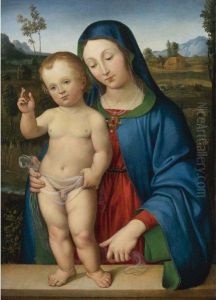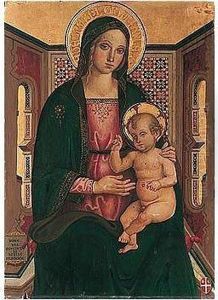Andrea Da Assisi Paintings
Andrea da Assisi, also known as l'Ingegno, was an Italian Renaissance artist born around 1480 in Assisi, a town in the Umbria region of central Italy. While not as widely known as some of his contemporaries, Andrea was a talented painter whose work reflected the influence of Perugino, with whom he is thought to have trained. Perugino was one of the dominant figures of the Umbrian school and an early teacher of Raphael, thus Andrea's style was situated in the midst of a significant artistic milieu.
Andrea da Assisi's works are characterized by their delicate coloring, graceful figures, and serene landscapes, which were typical of the Umbrian style of that period. His paintings often featured religious themes, as was common for the time, and he worked on several frescoes and altarpieces.
One of his most notable works is the fresco series in the 'Sala del Cambio' in Perugia, where he worked alongside Perugino. These frescoes demonstrate his skillful handling of space and perspective, as well as a clear understanding of narrative within the pictorial composition.
Although details about his life and career are sparse, it is clear that Andrea’s career was mostly spent in his native region of Umbria, and his last known work dates to the second decade of the 16th century. The exact date of his death is uncertain, but he is believed to have been active until at least 1521. Due to the scarcity of records, Andrea da Assisi's contributions to Italian Renaissance art are often overshadowed by those of his more famous peers, but his works remain a testament to the richness and diversity of artistic production during this period.

